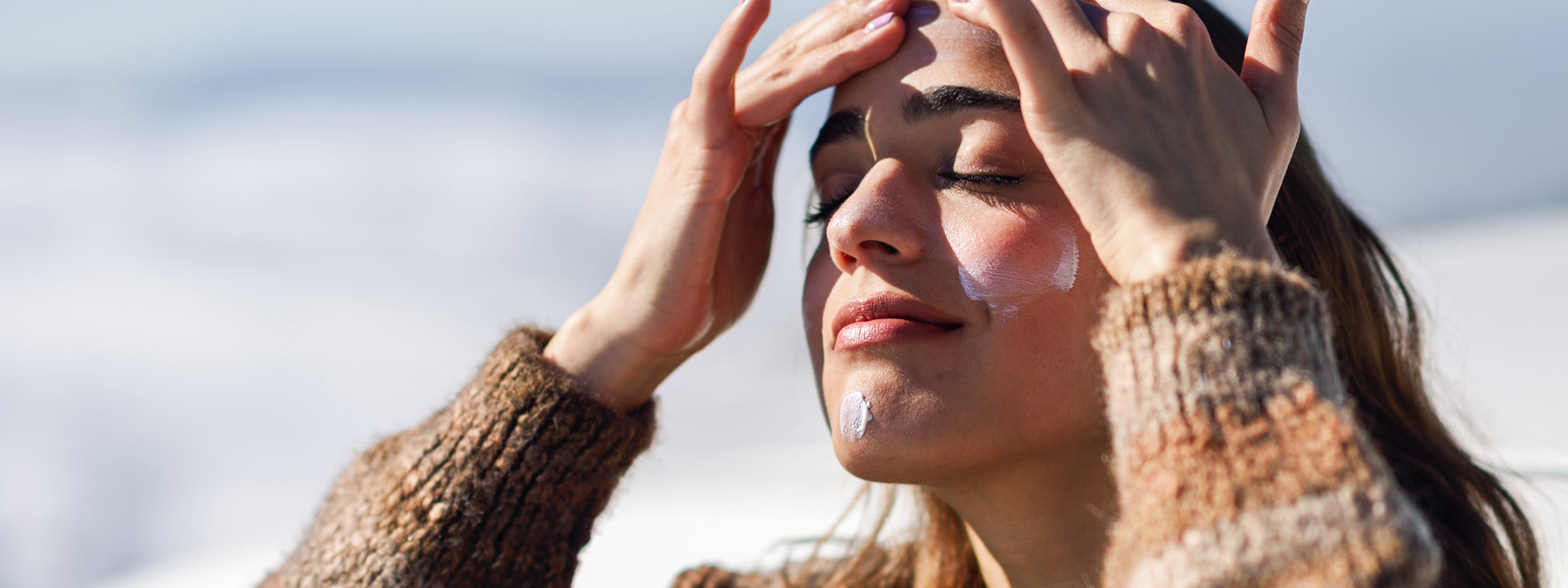Wearing sunscreen year-round sounds unnecessary, but wearing it in the winter is just as important as wearing it in the summer. In Utah alone, melanoma rates are nearly double the national average, according to data from the National Cancer Institute. Sun protection measures, such as wearing SPF clothing and using sunscreen is essential to help prevent skin cancer.
Even though it’s tempting to tuck away your bottle of sunscreen with your sandals for the winter, it’s important for your health to continue using it year-round.
Here’s why you should still use sunscreen in the winter months.
ULTRAVIOLET RAYS STILL SHINE
Even though it’s colder outside, the sun’s damaging rays are still all around even if they’re not as strong as they are in the summer.
A good way to measure the sun’s intensity is by checking the Ultraviolet (UV) Index.
In the summer, the UV Index is on the higher side. For example, a hot day in July could reach a 10+ on the scale, which means people can sunburn and experience bad side effects quickly.
In the winter, the index tends to be low. Across Nevada, Utah, Idaho, Montana and Colorado, the average in January is between 1 and 4.
Because you can still get sunburned when the sun is less intense, put sunscreen on every day, especially if you’ll be outside for a long time.
SNOW REFLECTS UV RAYS
If you love winter activities like skiing, snowboarding, or even hiking, keep in mind that being outside in the snow puts you at an increased risk of sunburn. In fact, snow can nearly double the UV strength of the sun that day, simply because it reflects light. This makes it especially important to wear sunscreen outside in snowy areas.
HIGH ALTITUDES INCREASE SUNBURN RISK
Did you know that higher altitudes also expose you to more UV rays? The higher you go, the thinner the atmosphere, which means less protection to filter out harmful rays. So, if you’re hitting the slopes, backcountry skiing, or live at higher altitudes, lather up with sunscreen before heading outside.
DON’T FORGET YOUR LIPS
It’s easy to overlook certain parts of the body with exposed skin, like the back of the ear or the lips. But these areas are just as important to protect! The American Academy of Dermatology Association recommends using a lip balm with an SPF of at least 30.
SIMPLE WAYS TO PROTECT YOUR SKIN IN WINTER
It doesn’t take much to dry out your skin. Count on cold weather and low humidity, whether inside or out, to dry your skin. Here’s how you can keep your skin healthy and safe from the sun all year round:
- Apply sunscreen with an SPF of 30 or higher on any exposed skin.
- Avoid very hot water and harsh soaps when cleansing your body.
- See your primary care provider if you have dry, itchy, or scaly skin.
- Use lip balm with SPF to keep your lips healthy.
- Use sunglasses with UV protection to block the sun’s damaging rays and protect the skin around your eyes.
- Wear brimmed hats to cover any exposed skin.
STAY SAFE AND PROTECT YOUR SKIN
Winter sun can be a little sneaky. Remember, just because it’s cold outside doesn’t mean you’re safe from harmful UV rays. You’re still at risk for sunburn—even in the chilliest months. So make sunscreen a part of your daily routine.
If you’re due for a skin cancer screening, make sure to find a health plan that covers those services. Learn more about insurance plans and how skin checks are covered.
Related Articles

